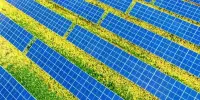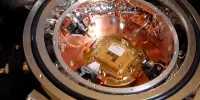Tsinghua University in China’s team of urban planners and information scientists discovered that an AI-based urban planning system outperformed human specialists in producing urban planning designs. The group discusses the parameters employed in creating the ideal urban plan and how well their AI performed when evaluated in their study, which was published in the journal Nature Computational Science. Paolo Santi of the MIT Senseable City Lab released a News & Views essay in the same journal issue explaining the team’s work on this new initiative.
Cities were left to expand organically throughout most of history—immediate needs were identified, and urban planners and engineers worked to meet those demands. In many cases, such a haphazard approach to urban growth has resulted in less-than-ideal outcomes. In recent years, city officials and other planners have attempted to take a more logical approach to the problem by developing designs for future development zones that take into account factors such as livability and pollution control.

As a result, urban planning has become a science, and professional urban development experts have emerged. Because of the increasing number of variables that must be accounted for as the size of a new development grows, this science can be exceedingly hard. The study team discovered a way to apply AI to the problem in this new endeavor to alleviate the burden.
The team chose to apply the 15-minute concept in designing their AI system, which states that people of the planned town should be able to get from their houses to critical facilities in 15 minutes. Because of reduced travel time and significantly less created air pollution, such a system improves quality of life. The researchers taught the system using past human-created blueprints as well as aspects considered to be strong design features such as the incorporation of parks, general greenery, bike paths, and entertainment areas.
After developing the technology, the research team deployed it to create a small community in a 3×3 grid city block. This allowed them to fine-tune the system, which resulted in improvements. They then gradually increased the size of the desired development and analyzed the consequences.
The researchers discovered that the system’s plans were as excellent as or better than those made by humans. They also discovered a significant reduction in time—from hours to seconds. The team concludes that its system is not intended to replace human urban planners, but rather to free them from the mundane aspects of urban planning, allowing them to concentrate on larger themes.
















